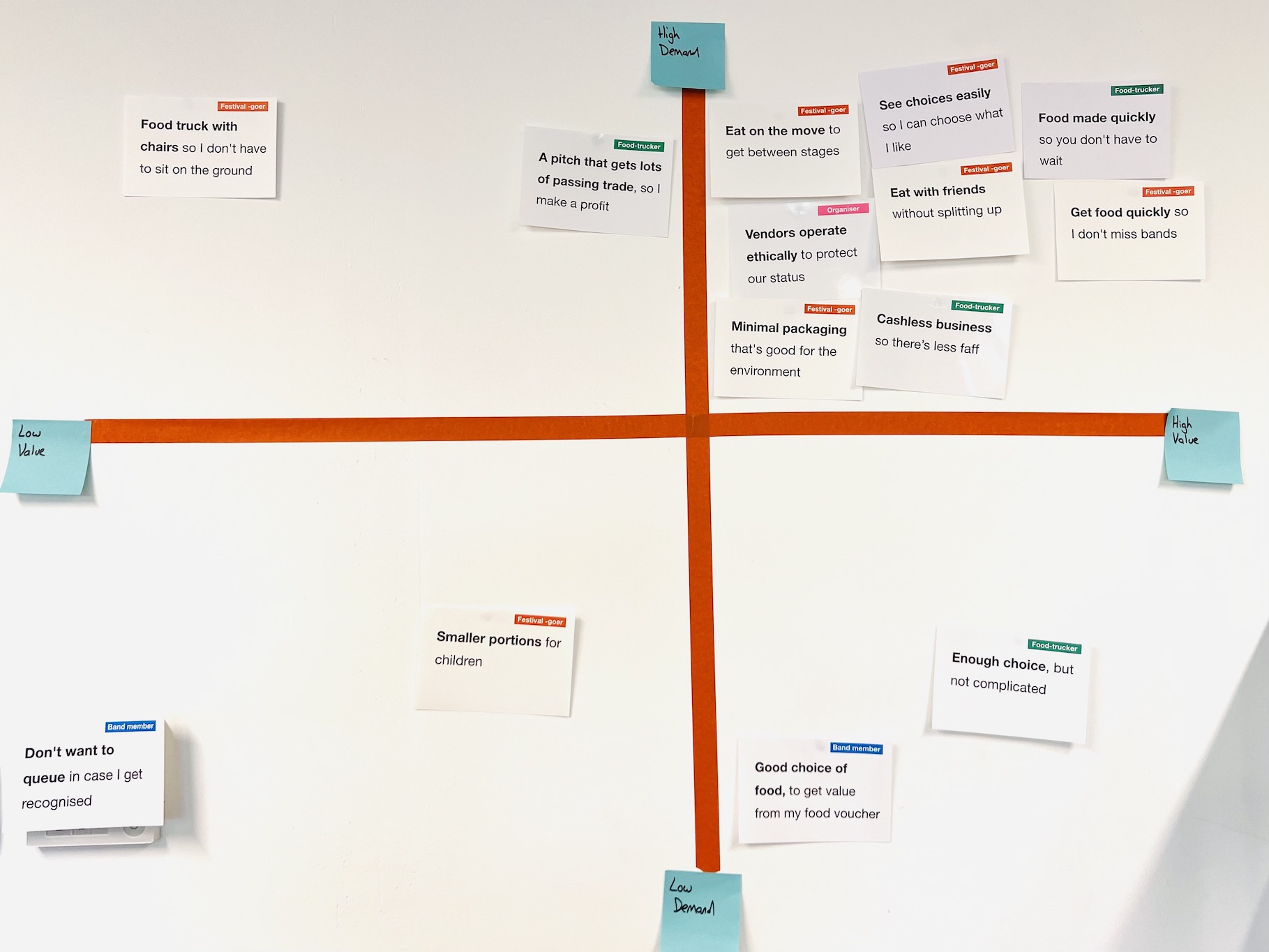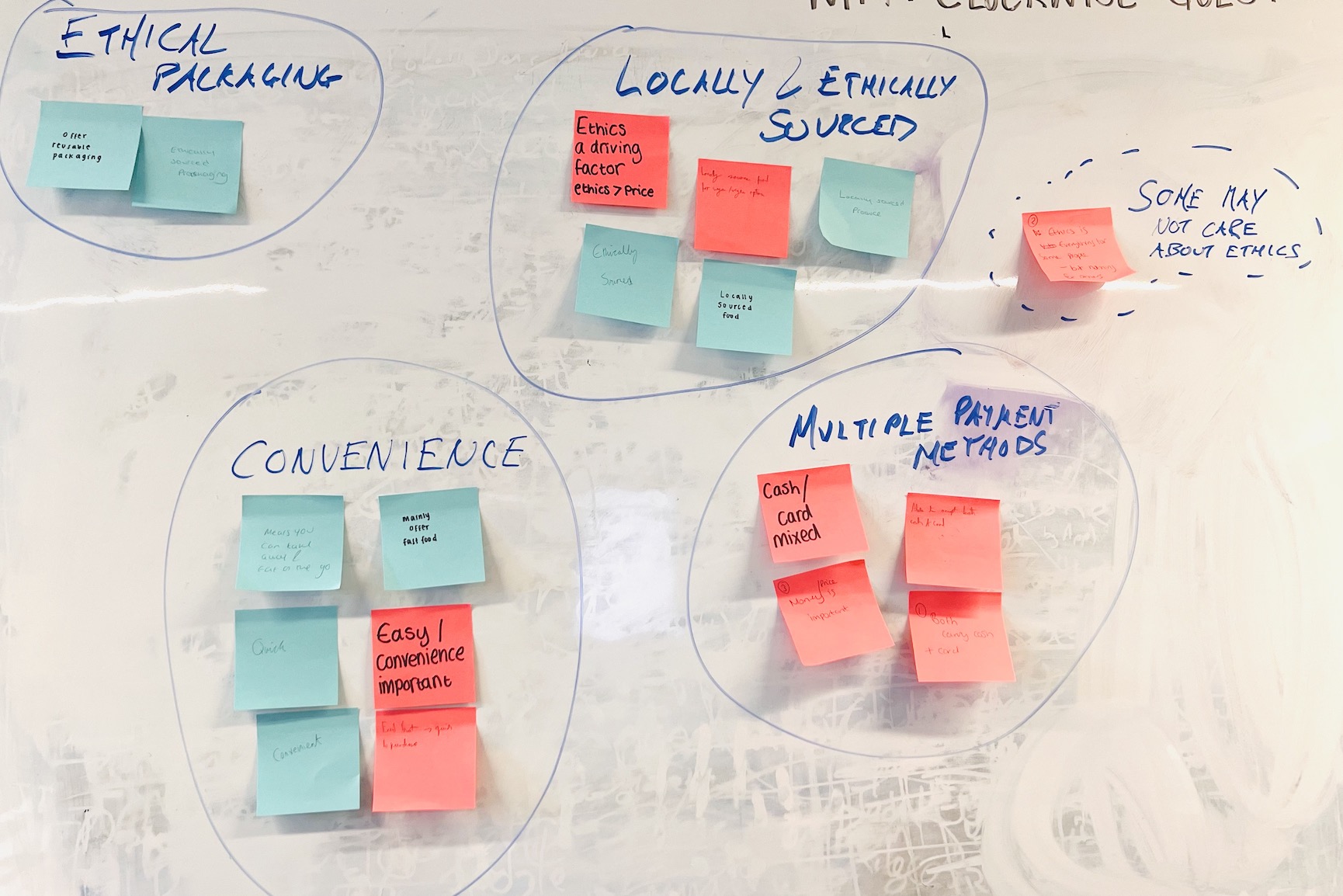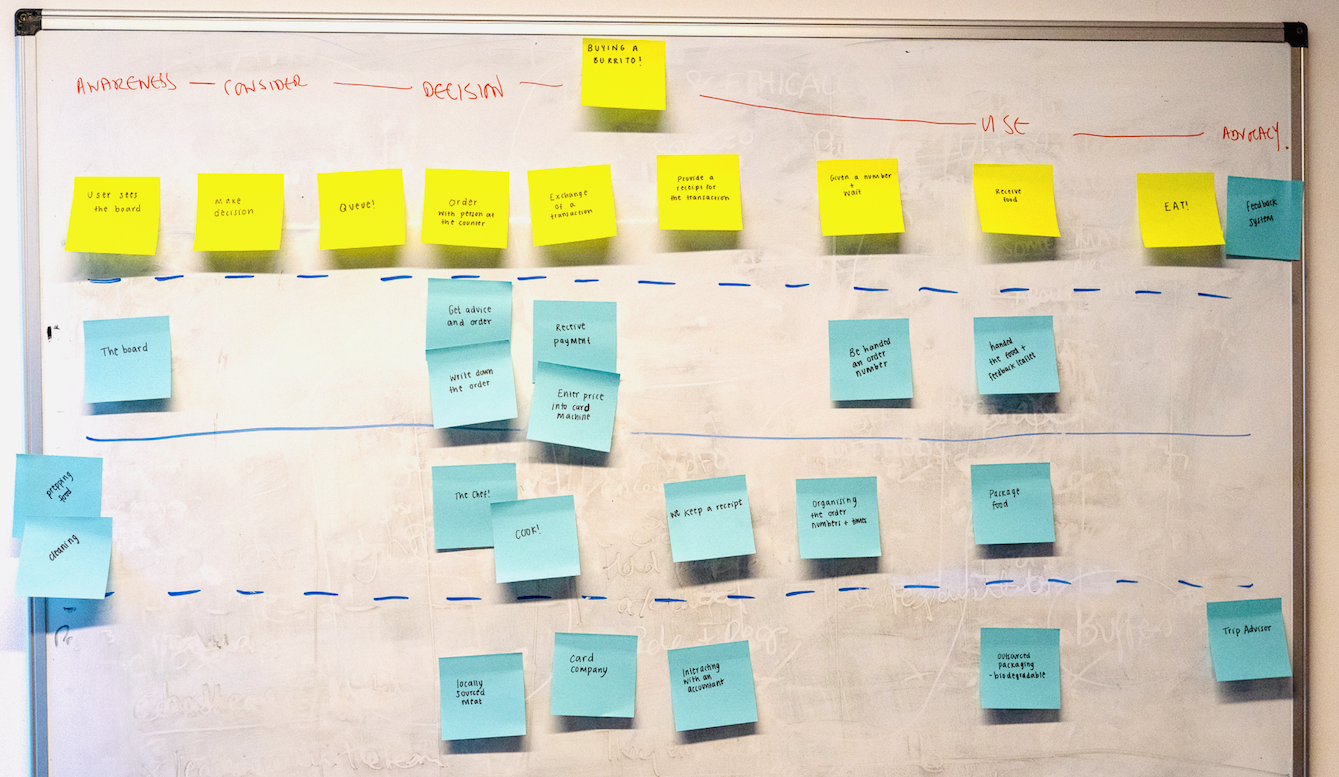Design challenge
This is fictional - we’ve made it up to help teams think about designing products and services to meet the needs of users. We picked Green Man festival because it’s proudly-good-for-you-Welsh and everyone loves that! If you get the chance you should definitely go.
The challenge
Imagine you have won a bid to provide food at this year’s Green Man music festival in the Brecon Beacons. You need to design a menu for the event that you believe will generate the most profit.
Each year the festival attracts 25,000 people. It’s family friendly, and prides itself on being one of the world’s most ethical music festivals. You can get a sense of what it feels like in this short film on YouTube
Stories from attendees
Bill and friends (festival goers) came last year. They travelled down from north Wales by car on Saturday. Parking was a bit of a challenge but once they got into the festival it was amazing and worth the hassle. It was quite a trek to their camping area so next time they’ll bring a trolley or a wheelbarrow to lug all their kit. They’ll bring less food this time because everything was available onsite and the stalls were open most of the day. Not much choice in the early morning though, so maybe they’ll bring breakfast or something to keep them going through the night.
Faye and Owain (festival goers) came to last year’s festival for the first time. The weather was incredibly hot so they’ll bring some extra sun cream and a few umbrellas for shade. Also they’ll bring their own water bottles and reusable cups because last year they had to pay for these things which seems pointless. Faye has vowed to bring better footwear. It’s a long way between the bands, loos, and eating places. Less fashion, more function!
Ray and his band (band members) the Big Folk Band have been coming to the festival for years now - initially as participants but latterly as the entertainment. They all love it and feel like they’re treated like kings and queens when they’re there. Access to the site is easy for them and the accommodation set up is more than adequate. Quite a few of the band and the technical bods bring their own food but Ray can’t be bothered with that. He uses the ‘band vouchers’ that they get given by the organisers and queues with everyone else to sample what’s on offer. Sometimes he offers to get food for others in the band, which he’s happy to do but realises it can be quite a faff remembering what everyone wants - especially if there’s no musicians menu provided up front.
Vera owns a food truck (food trucker). She came last year and learned a lot about the logistics and what’s involved from that experience. She hired one of the ready-installed catering caravans. It was pricey to rent but all the big stuff, like stoves, fridges, was all set up for her. Getting food and drinks on to the site was all ok too but she realises now that she over ordered. It would have been OK to bring stock in over a couple of days, as and when she needed it, rather than bring it all on the first day. It’s a bit extra hassle but having more room in the caravan would make serving easier. In fact, with extra room to move around she could probably add another staff member. She thinks there would be enough people to make it pay for itself. Also the queues were massive and some people were getting pretty agitated about waiting so long. Vera knows she could make it all flow a little bit better from an ordering, cooking, serving and payment point of view.
Dot is one of the event volunteers (event organiser). This will be her first year volunteering but she’s got friends that have it done it before. The deal is that you agree to muck in: direct traffic, marshall the crowds, make sure people are behaving and in return you get to see the bands and get free food. It’s hard work but it’s a good laugh and you get free food vouchers.
Useful context
- YouGov, age, gender, politics
- Background info and FAQs
- Fesitval Map (an old one from 2017)
The workshops
Understanding user needs
In order to design better products and services teams should understand people using them, and work backwards from that. By listing and prioritising the user needs, teams are able to identify areas to focus (i.e. high-demand, high value)

User research simulation
By researching the needs of users and understanding what they do, how they feel and act, teams can create better products that meet their needs. User research is an essential part of product and service development.
In the workshop teams used a recruitment screener and a discussion guide to prepare for an interview with a user, before role playing and analysing the findings.

Creating a menu (min-viable product)

Mapping the (food truck) service
The menu is a product that exists in a wider-service. A service blueprint allows teams to understand the interactions between the front-stage (i.e. what users see) and the back-stage of a service (i.e. what staff and organisations do behind the scene and all the things that support that). By doing this teams are able to uncover ways to improve a service.

Running a (food truck) service simulation
Building a simple model allows teams to explore the ebbs, flows and interactions of a service. Simulating scenarios (e.g. bigger queues, new competitors) helps them understand how things might play out and how they might improve a service.
